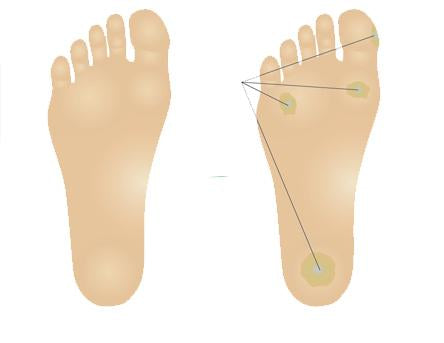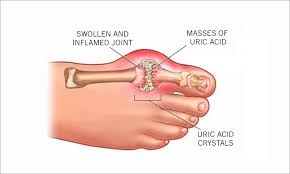Common Foot Problems in Your 50s and Beyond
We all get older. Our bodies get older. With ageing, our body loses its flexibility and become less elastic, which causes stiffness in the joints of both the foot and ankle. Hence, foot-related problems become a natural part of the ageing process. Normally, foot problems start developing in our 40s and 50s and without proper care, they can become severe and bring more issues as we age.
20 common foot-related problems you might face as you get older.
- Skin Changes :
Due to a shrinking supply of collagen, the skin will become drier and acquire more wrinkles. Dry skin and cracked heel become the obvious problem during old age. Make sure you are staying hydrated and applying moisturizer at least twice a day.

- Heel Pain & Plantar Fasciitis:
Heel pain is one of the common foot-related issues which normally begins in the 40s and 50s. As the condition worsens, it can develop plantar fasciitis as you get older. This is the result of wear and tear on the plantar fascia (or arch of the foot), degeneration of the heel fat pad, overuse, or inflammation. You need to start regular foot exercises and stretching the heel as well as start wearing orthotic inserts, or orthotic shoes to avoid further issues.

- Flat Feet :
Some people born with fat feet. However, it can develop with age too. Obesity, diabetes, and high blood pressure can also flatten the feet. With ageing, the posterior tibial tendon (primary support structure for the foot arch.) become weak or inflamed, called tendonitis, or tear after overuse. Wear arch support footwear to provide support to your feet and avoid further issues.

- Circulatory Problem :
Foot and Ankle Swelling is one of the common problems in elders. It is caused by poor circulation, leading to the build-up of fluid in the lower extremities (especially the ankles and feet). Cardiovascular disease, certain medications, and hormonal changes are possible causes of swelling that occur in both limbs.
- Stiffness and Arthritis:
As ageing makes the body less flexible and less elastic, it increases stiffness in the joints of both the foot and ankle. The ankle joint, subtalar joint, and the big toe or midfoot joints are three joints that frequently develop arthritis. Custom foot inserts and exercises can be helpful to fight stiff joints.

- Bunions :
These are the painful bony lumps, the result of a misalignment of the bones, which causes your big toe to point inward and the metatarsophalangeal (MTP) joint at the base of your big toe to shift outward. By wearing the wrong footwear can increase the problem. Wear Bunion Corrector footwear and consult with a doctor to avoid complications.

- Bursitis :
Small fluid-filled sacs, called bursae, cushion the bones, tendons, and muscles near your joints. They reduce the friction during the movement of the joints. Repeated motion or friction from shoes make them swell. Inflammation of bursae is called bursitis. It can be painful and can make the joint look swollen and red.

- Morton’s Neuroma :
Morton’s Neuroma Is one of the common and painful conditions in older people. It affects the ball of the foot, most commonly the area between your 3rd and 4th toes. High-heeled shoes or shoes with a tight toe box have been linked to the development of this condition. If the pain gets severe, you may require surgery.

- Diabetic Foot Ulcer :
People with diabetes suffer from the decreased sensitivity to pain. Hence, diabetic people won’t feel small cuts and wounds. Neglecting such injuries can result in infection and a diabetic ulcer. All you need to do is keep your blood sugar controlled and check your feet regularly. You can also wear diabetic footwear to get comfort, avoid swelling and provide excellent protection against irritation of the skin.

- Achilles Tendinitis :
The Achilles tendon is the band of tissue that connects calf muscles at the back of the lower leg to the heel bone. Due to the ageing and lower blood supply, it becomes weak and the condition is called Achilles tendinitis. Take proper rest and apply ice on the Achilles tendon area to reduce the pain. Don’t ignore it, consult with a doctor before it’s too late.

- Hammertoe :
Hammertoe is a type of foot deformity when toes arch upward or bend instead of resting flat. Hammertoe most often affects the second toe. However, it may also affect the other toes. The toe moves into a claw-like position. It can be treated with special footwear, pain medicines, and sometimes surgery.

- Claw Toe :
Claw toe can be simply due to inflammation of joints or secondary to neuromuscular conditions. It looks similar to Hammertoe, but instead of just the middle joint, it can affect the joints closest to the tips of your toes. In this condition, toes bend into a claw-like position. It’s important to get a diagnosis and treatment at an early stage.

- Corns :
Corns is a thick and hardened layer of dead skin cells on the foot. It’s like walking on stones when you have foot corns. Taking care of the foot corn at the right time is very important, if not taken proper measure at the correct time may lead to other serious problems.

- Calluses :
Calluses are the result of too much friction or pressure on the bottom of the foot. Wearing the wrong footwear is the main reason for this condition. Always wear properly fitted, supportive footwear to avoid further issues.

- Gout :
Gout is one of the most common and painful forms of arthritis. In this, high levels of uric acid in the blood result in the formation of extremely painful urate crystals in the joint. Gout is often misunderstood by patients as a bunion due to similar symptoms like pain, inflammation, and redness. If left untreated, gout can cause permanent damage.

- Toenail changes :
Nail abnormalities commonly affect elderly people. There will be changes in the toenails’ appearance and texture sometimes, the side of the nail, normally the big toe grows into the skin and as a result, the toe may swell and can get infected. It is recommended to cut them too short and consult with a doctor to treat the infection in its early stages.

.
17. Stress Fractures :
Ageing lower your bone density (osteoporosis) and make it easier to fracture bones, including the bones in the feet. Stress fracture needs proper rest and it takes a couple of weeks to recover. Follow a good diet and develop a habit of regular exercise to strengthen your bones.

Our feet are carrying our weight since we started walking. Hence, it is essential to look after them to enjoy an active and healthy lifestyle as we get older. Select comfortable orthopedic footwear or custom orthotics to provide necessary support and comfort to feet. Continuous use of this footwear and customised insole can prevent the majority of foot-related issues. Hence, experts advise using comfortable footwear outside as well as at home.
